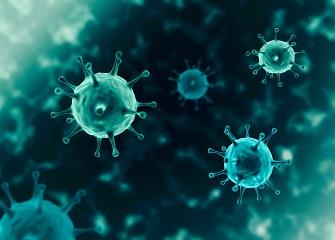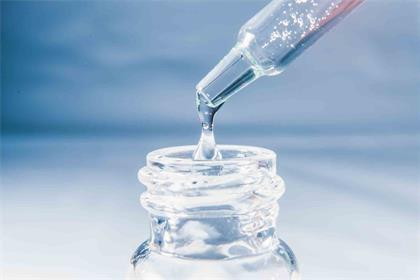
Hypoglycemic Functional Factors in Natural Products and Their Mechanisms of Action
February 19, 2024
Diabetes has various types and requires long-term treatment. Antidiabetic drugs are essential for people with the disease. These drugs can be classified into insulin injections and oral antidiabetic medications. Commonly used oral antidiabetic drugs in clinical practice include biguanides (such as metformin), sulfonylurea insulin secretagogues (e.g., glimepiride, glipizide, gliclazide), non-sulfonylurea insulin secretagogues (e.g., repaglinide, nateglinide), α-glucosidase inhibitors (acarbose, voglibose, miglitol), DPP-4 inhibitors (sitagliptin, etc.), and GLP-1 receptor agonists (exenatide, liraglutide). These oral antidiabetic medications mainly work by increasing insulin sensitivity, slowing down the metabolism of carbohydrates in the small intestine, repairing and improving the function of pancreatic β-cells, and promoting insulin secretion to achieve blood glucose reduction. However, these drugs have various side effects, such as adverse reactions in the gastrointestinal tract and skin, as well as the potential to trigger respiratory and urinary tract infections.
Chinese patent medicines are made from traditional Chinese herbs and processed into various forms of traditional Chinese medicine products. The plant components of oral antidiabetic Chinese patent medicines mainly include astragalus, rehmannia, Codonopsis pilosula, pollen typhae, ophiopogon, Pueraria root, and salvia miltiorrhiza. They mainly produce therapeutic effects on type 2 diabetes by tonifying qi, nourishing yin, supplementing the kidneys, invigorating the spleen, and generating fluids. Compared to Western medicine formulations, Chinese patent medicines generally have fewer toxic side effects. However, Chinese herbal therapy emphasizes individual differences among patients, and not all Chinese patent medicines are suitable for everyone. Additionally, they should not be used for long periods, and their side effects are not well defined.
Polysaccharides
The hypoglycemic effects of polysaccharides involve a wide range of factors, summarized as follows:
Protecting pancreatic β-cells and promoting insulin release.
Influencing the activity of sugar metabolism enzymes, promoting glycogen synthesis, or inhibiting glycogen breakdown.
Antagonizing hyperglycemic hormones.
Promoting the utilization of sugar by peripheral tissues and target organs.
Preventing lipid peroxidation.
Increasing insulin receptor expression or affinity, enhancing insulin sensitivity.
Improving microcirculation.
Polysaccharides such as okra polysaccharide, Houttuynia cordata polysaccharide, and Malva verticillata polysaccharide can lower blood glucose levels by regulating the activity of sugar metabolism enzymes, inhibiting α-glucosidase, α-amylase, and key enzymes in gluconeogenesis, enhancing sugar fermentation and key enzyme activity in the pentose phosphate pathway. Polysaccharides from Houttuynia cordata, adzuki bean, and tea can promote the synthesis of liver glycogen and stimulate insulin secretion to control blood glucose levels. Polysaccharides from Chinese skullcap, Coptis chinensis, and corn silk can repair damaged pancreatic islet tissue, increase the number of pancreatic β-cells, and elevate insulin levels to regulate blood glucose and improve symptoms of hyperglycemia. Polysaccharides from astragalus, bitter melon, and corn silk can increase the content of HDL-C in serum, reduce LDL-C, TC, and TG levels, alleviate lipid metabolism disorders caused by hyperglycemia, and improve hyperglycemia symptoms.
Saponins
Saponins, also known as sapogenins, consist of sapogenin and sugar, sugar aldehydes, or other organic acids. They are mainly found in higher plants, and many Chinese herbs such as ginseng, yuanzhi, platycodon, licorice, Zhimu, and chaihu contain saponins. Saponins can be divided into steroidal saponins and triterpenoid saponins, exhibiting activities such as expectorant, antihemolytic, antibacterial, antipyretic, sedative, and anticancer effects. Saponin substances can control blood sugar levels by stimulating glycogen synthesis through AMPK/NF-κB signaling pathways, activating the PI3K/AKT pathway, leading to glycogen synthase kinase-3α/β (GSK-3α/β) phosphorylation deactivation, and enhancing glucose tolerance. Saponins from seabuckthorn, for example, can promote glucose uptake and utilization by activating the AMPK/ACC signaling pathway and the GLUT4 pathway regulated by IRS-1/PI3K/AKT, thereby controlling serum glucose levels. Protecting and repairing pancreatic β-cells damaged under high glucose conditions, making them function normally, is also a major mechanism of saponins in lowering blood sugar. Plant saponins like ginsenosides can alleviate insulin resistance by activating the IRS1/PI3K/AKT/GSK3β-GS signaling pathway, regulating blood glucose levels by lowering the Bax/Bcl-xL ratio, JNK phosphorylation levels, and Caspase-3 activity.
Polyphenols
Plant polyphenols, also known as tannins, mainly include phenolic acids, flavonols, flavanols, anthocyanins, and flavones, exhibiting strong antioxidant effects and effectively preventing chronic diseases such as hyperglycemia, hyperlipidemia, and cardiovascular and cerebrovascular diseases.
Studies have found that polyphenols from ‘Simon 1’ sweet potato stems and leaves can upregulate the PI3K/AKT/GSK-3β signal pathway in the liver and the PI3K/AKT/GLUT-4 pathway in muscles, enhancing glycogen synthesis and the activity of glucose metabolism-related enzymes to regulate blood glucose balance. Polyphenols such as anthocyanins from seabuckthorn can regulate blood glucose levels by inhibiting the expression of G-6-P, GSK-3β, CPT1-α, and GP mRNA. Polyphenols from rose, large-leaf yellow tea, and black soybean anthocyanins can reduce glucose production in the body by inhibiting the activity of α-glucosidase and α-amylase. Compounds like curcumin, catechin from cocoa, and ellagic acid can regulate the AMPK signaling pathway, increase GLUT4 protein expression, and promote glucose transport into cells to lower blood sugar levels. Flavonoids from ginkgo biloba, seabuckthorn anthocyanins, and mulberry mistletoe total flavonoids can regulate blood lipid balance by lowering serum TG, TC, and LDL-C levels and increasing HDL-C levels, thereby alleviating hyperglycemia.
Alkaloids
Alkaloids are diverse and structurally complex, mainly classified into organic amine alkaloids like ephedrine and matrine; isoquinoline alkaloids like berberine and morphine; pyrrolidine alkaloids like sophoridine and lobeline; and pyridine alkaloids like nicotine and arecoline. Their hypoglycemic mechanism is mainly inhibiting the activity of α-glucosidase. Due to the structural similarity of alkaloids to sugars, they can replace sugars in the human body and bind to α-glucosidase. The presence of nitrogen elements strengthens this binding, competitively inhibiting the activity of α-glucosidase and affecting the metabolism of sugar compounds. Bioalkaloids like mulberry branch alkaloids can competitively inhibit disaccharidases to reduce glucose production in the body. Berberine can control blood glucose levels by inhibiting PEPCK1 activity and regulating gluconeogenesis. Alkaloids from Brucea javanica seeds can promote glycogen synthesis through the AKT-mediated GSK3 phosphorylation pathway and improve sugar metabolism. Some alkaloids can activate the AMPK signaling pathway, promote glucose uptake by cells, and thus reduce serum glucose levels. In addition, alkaloids can regulate organ-specific antioxidant enzyme activities (SOD, CAT) to protect organs, such as the liver, kidney, or aorta, and alleviate the pressure of high blood sugar.
Protein Peptides
Plant proteins and peptides play a crucial and irreplaceable role in regulating the human body, often used in the development of medicine and health food. Research shows that bitter melon glycosides and peptides in bitter melon exhibit good hypoglycemic activity. Using pectinase and cellulase to hydrolyze bitter melon, bitter melon peptide solution was prepared, and experiments in diabetic mice induced by streptozotocin found that it had a hypoglycemic effect. Almond peptides can effectively regulate blood glucose and lipid biochemical indicators in diabetic rats, providing an adjuvant therapeutic effect for hyperlipidemic diabetes. Polysaccharide-peptide complexes isolated from mulberry leaves can lower blood sugar in diabetic mice induced by streptozotocin and also reduce plasma triglycerides and cholesterol. The hypoglycemic mechanism of mulberry leaf peptides may stimulate insulin secretion, relieve the degradation and inactivation of insulin in peripheral tissues, thereby increasing insulin blood concentration and reducing blood glucose.
Plant Essential Oils
The chemical composition of plant essential oils is extremely complex, mainly including terpenoids, aromatic compounds, fatty compounds, nitrogen-containing compounds, and sulfur-containing compounds. Among them, terpenoids are the most common and abundant components in essential oils, such as camphene, linalool, and pinene; aromatics are the second-largest category of compounds in plant essential oils, mainly including phenols, aldehydes, ketones, esters, terpene-derived compounds, and benzene propane derivatives, such as cinnamaldehyde, eugenol, and cumin aldehyde; fatty compounds are present in minimal amounts in plant essential oils, and nitrogen-containing and sulfur-containing compounds are mainly found in spicy plants. Research reports that active ingredients such as cinnamaldehyde, thymol, and magnolol in plant essential oils have good hypoglycemic effects. Active components in plant essential oils (such as isobutylphenol) can inhibit the activity of α-amylase and α-glucosidase, reducing glucose production in the body. Phenols such as thymol and magnolol can reduce serum TC, TG, and LDL-C levels, increase HDL-C levels, and maintain lipid metabolism balance in the body. Cinnamaldehyde can upregulate endothelial nitric oxide synthase (eNOS) and the IRS1/PI3K/AKT2 signaling pathway, lower AGEs, RAGE, and nicotinamide adenine dinucleotide phosphate oxidase 4 (NOX4) levels, improve insulin resistance, protect liver function by reducing serum AST and ALT activities, and thus alleviate hyperglycemia symptoms. In addition, active substances such as thymol and cinnamaldehyde can regulate antioxidant enzyme activities (SOD, CAT) in the liver, kidney, or aorta to protect corresponding organs and alleviate high blood sugar pressure.
Leave a Reply
Related Products
You Might Like Also

Lipids Used in COVID-19 mRNA Vaccines
The COVID-19 pandemic has killed millions of people. Vaccines certainly are the most outstanding ways to prevent major diseases and death, though they haven't eliminated infections. At present, the most effective vaccine is the mRNA vaccine developed by Pfizer-BioNTech and Moderna. Before that, mRNA technology stopped in the lab phase. Read More

Mechanism of Action of Paclitaxel
Paclitaxel is a natural anticancer drug with the molecular formula C47H51NO14. It has been widely used in the clinical treatment of breast cancer, ovarian cancer, and certain head and neck cancers, as well as lung cancer. Its novel and complex chemical structure, extensive and significant biological activity, unique mechanism of action, and scarce natural resources have gained immense favor among botanists, chemists, pharmacologists, and molecular biologists, making it a prominent anticancer star and research focus in the latter half of the 20th century. Read More

Fermented Raw Material for Cosmetic Skincare Product
The cosmetics and skincare industry is constantly evolving and a recent trend that has emerged is the use of fermented ingredients in skincare products. Fermentation is a microbial metabolic process that has been used for centuries in food and beverage production, and now it has been extended to the cosmetic industry. Read More

Nanobodies Definition, Structure, Advantages and Applications
Nanobodies are the smallest functional single-domain antibodies known to be able to stably bind to antigens, and have unique structural and functional advantages. The molecular weight of nanobodies is only 12-15 kDa, which retains the antigen binding ability of traditional antibodies. However, nanobodies have higher solubility and stability, and have unique advantages in biological function and biochemical characteristics. Therefore, nanobodies have shown good control effects in disease diagnosis, cancer and infectious diseases. Read More

New Technology to Promote Drug Development-AI Technology
For a long time, the research and development of each new drug has faced the challenges of high cost and long cycle. In response to these challenges, major pharmaceutical companies have shifted from targeting common diseases to developing drugs for specific diseases. At the same time, these companies are constantly looking for new technologies for new drug development, such as high-throughput screening technology, DNA encoded chemical library, computer-aided drug discovery, and artificial intelligence. Read More

Liposomes in Anti-tumour Drug Carriers
Chemotherapy with anti-tumor agents is currently one of the most important systemic treatments for cancer. However, direct treatment with drugs lacks specificity and sensitivity and tends to attack normal cells indiscriminately, resulting in side effects. Liposomes, as drug carriers, provide a superior solution for maintaining or enhancing the efficacy of chemotherapy while reducing the severity of reactions and side effects. Read More











Comments
Thank you for producing such a fascinating essay on this subject. This has sparked a lot of thought in me, and I'm looking forward to reading more.